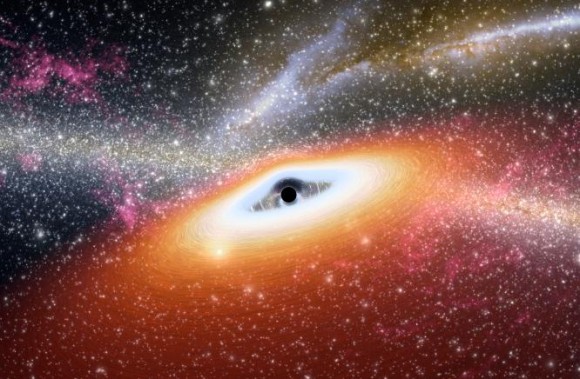| Online: | |
| Visits: | |
| Stories: |

| Story Views | |
| Now: | |
| Last Hour: | |
| Last 24 Hours: | |
| Total: | |
Astronomers Poised to Capture Image of Supermassive Milky Way Black Hole

Artist’s concept of one of the most primitive supermassive black holes (central black dot) at the core of a young, star-rich galaxy. Image credit: NASA/JPL-Caltech
Scientists have long suspected that supermassive black holes (SMBH) reside at the center of every large galaxy in our universe. These can be billions of times more massive than our sun, and are so powerful that activity at their boundaries can ripple throughout their host galaxies.
In the case of the Milky Way galaxy, this SMBH is believed to correspond with the location of a complex radio source known as Sagittarius A*. Like all black holes, no one has even been able to confirm that they exist, simply because no one has ever been able to observe one.
But thanks to researchers working out of MIT’s Haystack Observatory, that may be about to change. Using a new telescope array known as the “Event Horizon Telescope” (EHT), the MIT team hopes to produce this “image of the century” very soon.(…)
Read the rest of Astronomers Poised to Capture Image of Supermassive Milky Way Black Hole (665 words)
© mwill for Universe Today, 2014. |
Permalink |
No comment |
Post tags: EHT, Event Horizon Telescope, Sagittarius A*, supermassive black hole, VLBI
Feed enhanced by Better Feed from Ozh
Source: http://www.universetoday.com/116780/astronomers-poised-to-capture-image-of-supermassive-milky-way-black-hole/



